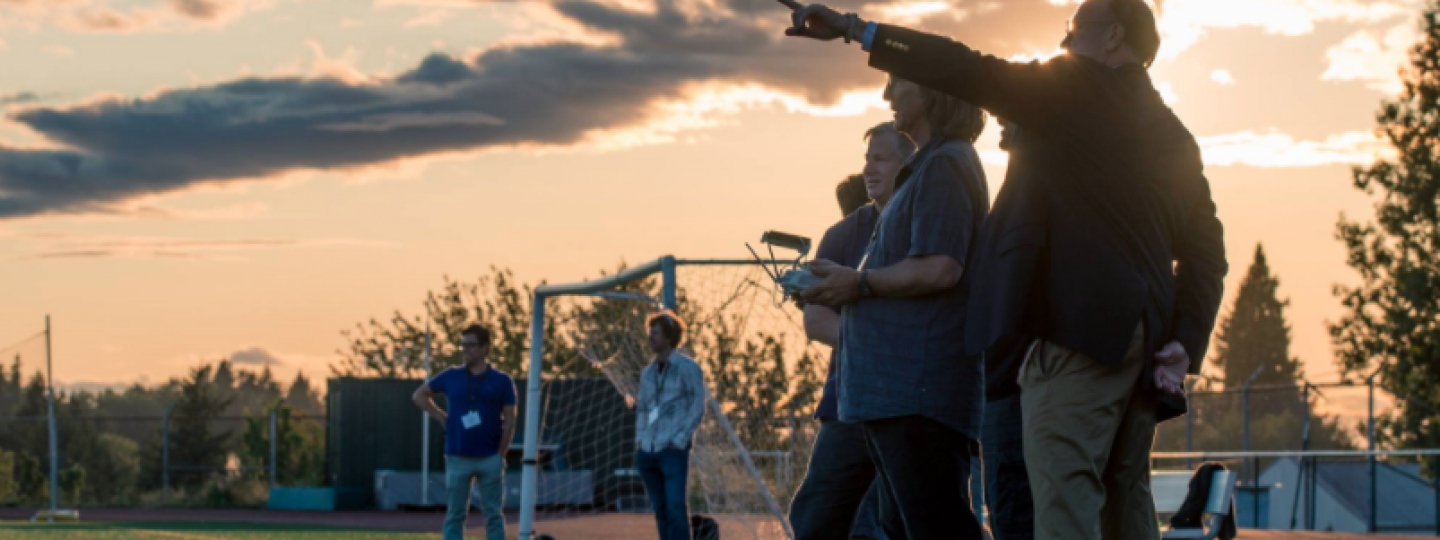This year, Poynter organized four workshops that trained more than 325 journalists and journalism educators how to safely and ethically fly drones. Almost a third of our graduates have passed the Federal Aviation Administration Part 107 drone pilot license exam.
In addition to exam prep and hands-on drone flight training, our partners and I vowed to produce a “code of drone journalism ethics” that would take into account journalism and photojournalism ethics policies but add the legal considerations for flying in government-controlled airspace and safety concerns that come with remote controlled flight.
RELATED TRAINING: The Flying Camera: Drone Photography Skills Webinar Series.
Drone journalism code of ethics
Drone journalists should adhere to federal, state and local laws with safety concerns and the ethical decision-making embodied in the codes of ethics adopted by the National Press Photographers Association, the Society of Professional Journalists and the Radio and Television Digital News Association.
Drone Journalism ethics should be even more stringent than other journalism ethics. It is one form of journalism that is legally regulated by government authorities who control airspace.
Consider these guidelines:
Safety is the first concern. Do not endanger people, animals or property.
Drone pilots who are operating as commercial operators have an obligation to seek their FAA Part 107 license. The pilot should obtain adequate insurance coverage for property damage and injury that could result from drone flights. Journalists who are generating content for their newsroom should not claim that they are recreational pilots in order to avoid licensure requirements.
Newsrooms should not encourage others to fly illegally.
Newsrooms should discourage drone flights that violate FAA regulations by declining to publish, broadcast or post still images or video which, although legally obtained by the news organization from a third party, may contain evidence of those violations (i.e. flights over people, night flights). Not rewarding unauthorized drone use with public recognition may help to discourage similar violations by others. If the images or video that have been captured through improper means are of such high news value that the journalists deem them newsworthy, the journalist or news organization should clearly explain why those images are newsworthy despite the techniques utilized to capture them.
Would you “do that” if you were capturing the image while on the ground?
If you would not peer over a fence, look into a window or enter private property, how would you justify capturing the same image because you are airborne?
Respect privacy.
The Society of Professional Journalists code of ethics says, “Balance the public’s need for information against potential harm or discomfort. The pursuit of the news is not a license for arrogance or undue intrusiveness.” What is your journalist purpose? How is this tool helping you to tell a more complete story?
Respect the integrity of the photographic moment.
Drones have the potential to interrupt events, especially when hovering low. While photographing subjects, drone journalists should not intentionally contribute to, alter, or seek to alter or influence events.
Do not improperly enhance.
Music has the potential to set an editorial tone. How does that editorial tone affect the truth you are conveying?Journalists should not add natural sound to drone video unless the sound was captured at the same time and place as the drone video was captured. Carefully consider how slow motion or speeding up effects might affect the editorial integrity of the video. Slow motion can appear dramatic and change the context of a news story. Video that has been sped up may add false urgency.
Newsrooms should recognize that the pilot in command makes the decision about whether a flight can be accomplished safely.
Newsrooms should not ask or pressure a drone pilot to fly in a way that the pilot in command considers to be unsafe or legally questionable.
Drone journalism pilots in command should not be expected to report or perform other duties while commanding an aircraft.
Safe drone flight should be the pilot’s main concern while operating a drone or overseeing performing pre-flight checks.
Drone journalists have an obligation to hone their flight skills and “stay sharp.”
Practice flying in various atmospheric conditions. FAA sectional maps change and the FAA is constantly updating flight and airspace restrictions. Pilots should stay current on changes to the evolving legal landscape regarding drone operations.
Drone journalists have an obligation to be certain their aircraft and gear are in good repair.
Pre-flight and post-flight safety inspection checks are a must. Pilots should inspect props, motors, batteries and the aircraft body. Do not allow cost-cutting to compromise safe flight. If you cannot afford to fly safely, you cannot afford to fly.
Coach others.
The public’s perception of drone flights depends on how professionally pilots operate in these early days of this emerging technology. If the public sees that drones are needlessly invading privacy and putting people at risk, there is no doubt that voters will pressure public officials to clamp down on drone operations. It is in your interest and it is in the public’s interest for you to coach other operators, especially other journalists, when you see them flying unsafely, illegally or unethically.
These guidelines were developed by:
• Al Tompkins/Poynter
• Mickey Osterreicher/General Counsel for the National Press Photographers Association
• Matt Waite/Drone Journalism Lab at the University of Nebraska-Lincoln
• Dr. Kathleen Culver/Assistant Professor and Director, Center for Journalism Ethics, University of Wisconsin School of Journalism and Mass Communication
• Jon Resnick, DJI
The guidelines were the product of training powered by funding from the Google News Lab.







